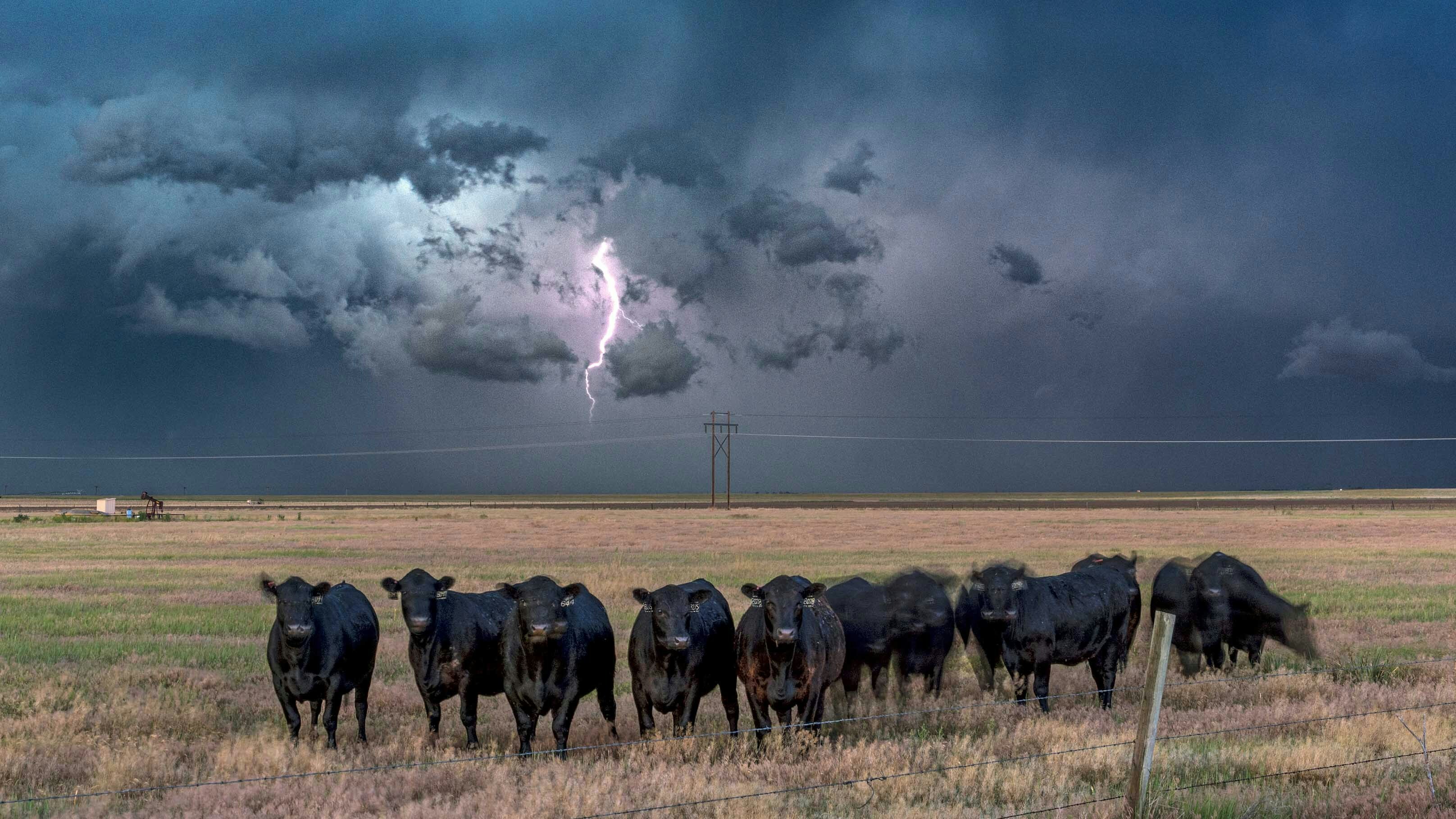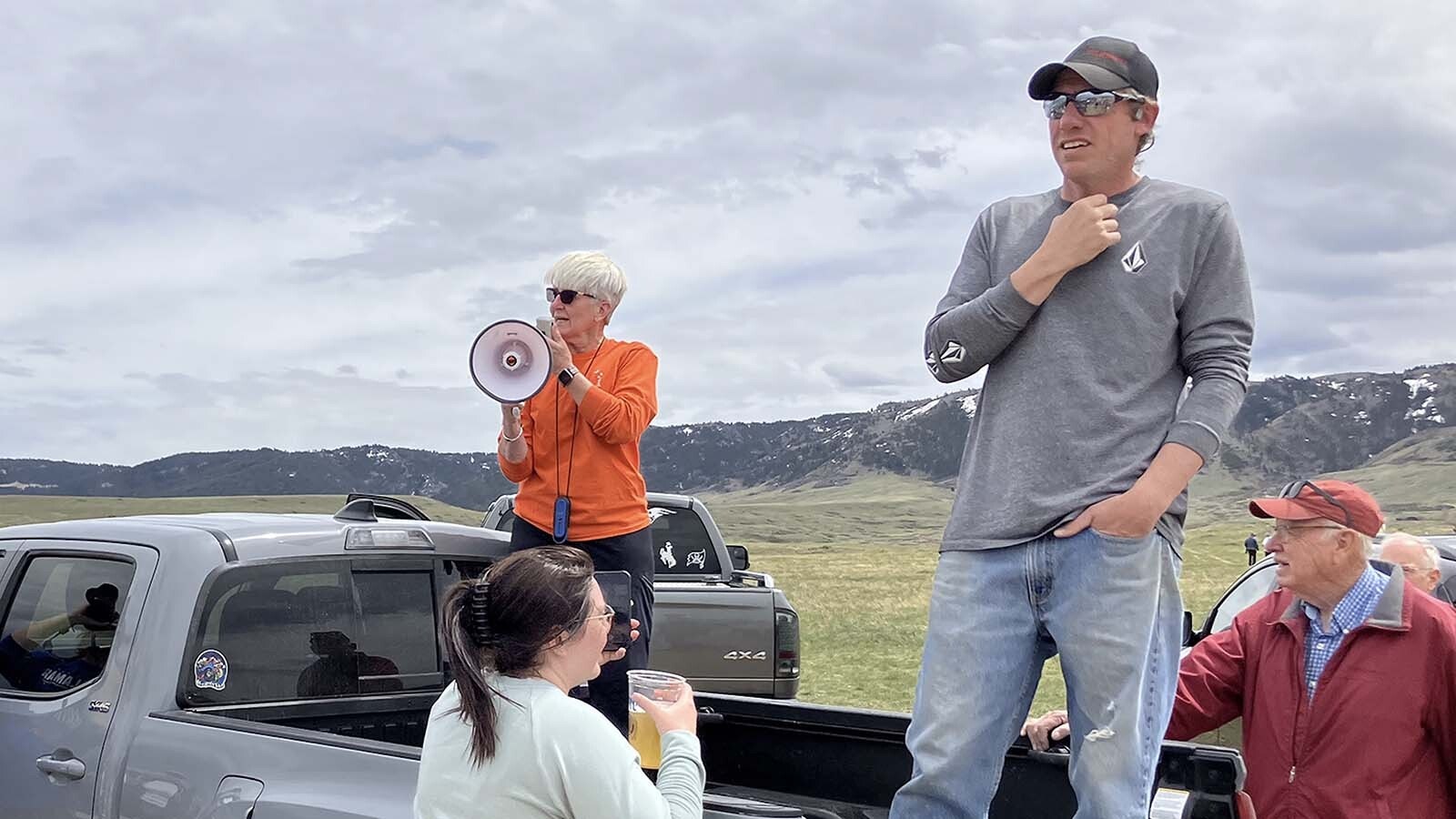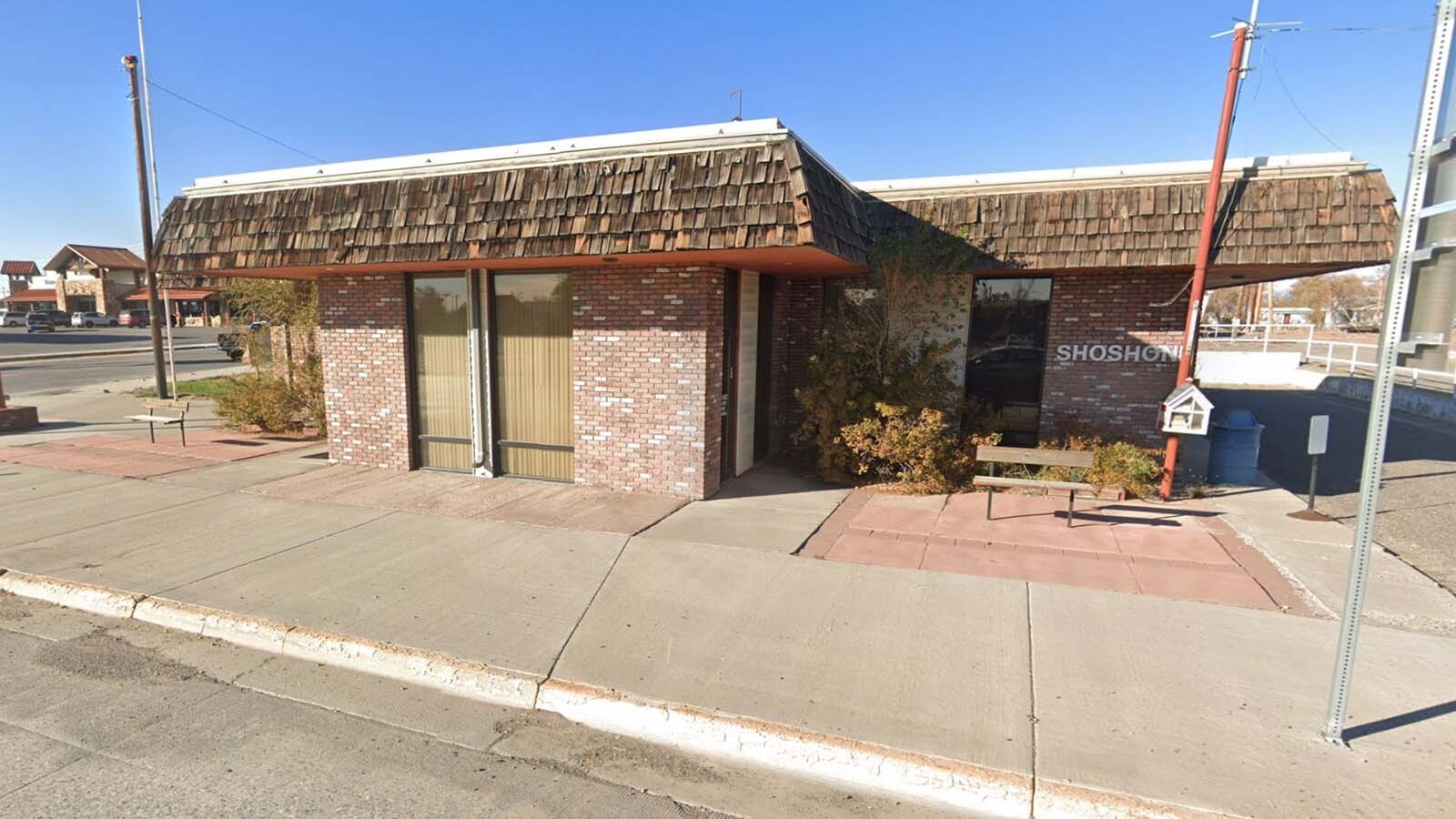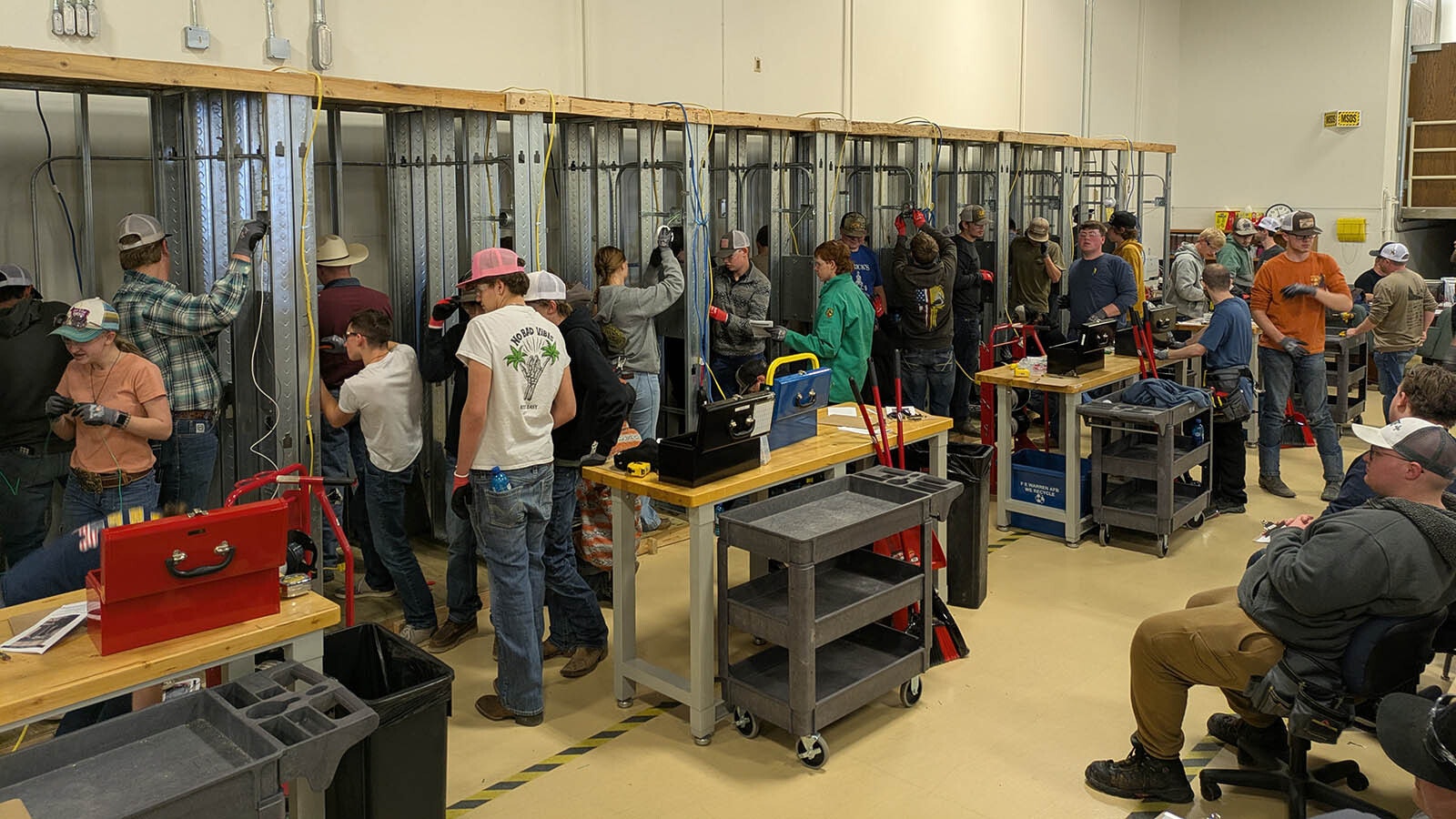TORRINGTON — Just before Christmas in 2020, Ryan Schilreff, general manager of Torrington-based Wyrulec Co., nearly fell out of his chair when he read a news story from Colorado that said the massive 1,710-megawatt coal-fired Laramie River Station power plant (LRS) in Wheatland might close — as in forever.
“We dug our heels in on the whole thing and said, ‘Hey, we will not yield on reliability,’” said Schilreff, who said the disclosure — which he later learned to be inaccurate — had the unintended effect of uniting all eight of Tri-State Generation’s Wyoming’s power cooperatives to fight for the plant’s survival, even though that wasn’t necessary at the time.
Wyrulec is among eight Wyoming power cooperatives in rural communities that are members of Tri-State Generation and Transmission Association, a Colorado-based not-for-profit power supplier to 41-member electric distribution cooperatives and power districts in a four-state region made up of Colorado, Nebraska, New Mexico and Wyoming.
The scare of LRS potentially shutting down rattled Wyrulec and led the cooperatives in Wyoming to begin waging a yearslong fight to save what ultimately could be the last coal-fired power plant in Tri-State’s portfolio.
“They became known as the “vocal Wyoming cooperatives,’” said Lisa Tiffin, Tri-State’s senior vice president in charge of energy management, who remembers fielding some of those initial anxious phone calls from the Wyoming contingent back in 2020.
She explained that the confusion over LRS came from a misinterpretation of a resource planning document for its portfolio of power plants that included a “modeled retirement” of Tri-State’s portion of the power plant.
The three-unit power plant, which is owned jointly by Tri-State, North Dakota-based Basin Electric Power Cooperative, Nebraska-based Lincoln Electric System and the Western Minnesota Municipal Power Agency, is unique because it delivers electricity to two electrical grids, the only one of its kind in the United States.
It has a strategic purpose within the country’s more than 500,000 miles of high-voltage transmission lines.
The plant’s unit 1 is connected to the Eastern Interconnection, while units 2 and 3 are connected to the Western Interconnection. These grids, which divide the United States into two sections, were developed independently and must be supplied electricity separately.
It’s the law of physics and how electricity works.
The plant’s strategic crossroads on the power grid is why Schilreff and others went ballistic when they learned the plant might close.
Tiffin told Cowboy State Daily that the arbitrary closure of a power plant that is jointly owned can only be done through a process involving the owners and cannot be made solely by Tri-State.
Not Retiring
“There was no intent to retire LRS, but it certainly got the attention of the Wyoming members,” she said. “They are a very vocal group, and they are very united.”
That’s no surprise considering Wyoming’s connection to coal and coal-fired electricity.
Coinciding with this controversial concern, winter storm Uri dumped record amounts of snow on Texas, with frigid temperatures and severe weather impacting the entire state. The February 2021 storm caused millions of Texans to lose power.
“This got the attention of our members,” said Tiffin of the results of the Texas storm that informed the Wyoming cooperative to plan for such an emergency.
In the background, Tri-State was in the early innings of drafting its own energy resource planning roadmap that effectively called for the power cooperative to exit all of its coal-fired plants in phases from 2026 to 2031, with the exception of Laramie River Station.
“That’s a substantial adjustment to our portfolio,” said Tiffin, noting that the moves have largely been forced upon Tri-State by the Colorado Public Utilities Commission and Colorado Legislature wanting to reduce greenhouse gas emissions over the next few decades.
As a result, said Tiffin in an interview with Cowboy State Daily, “the Wyoming members have really united around the issue of reliability.”
The Wyoming cooperatives helped Tri-State develop new “reliability metrics” for power generation during extreme weather conditions, which essentially were important for keeping baseload power plants like LRS playing a significant role on keeping Tri-State’s lights burning on the electrical grid.
“Laramie River Station is one of the cheapest, if not the cheapest, coal resources in the country,” Tiffin said.
Last One Standing
LRS will represent the last coal-fired plant in Tri-State’s portfolio once it retires the 458-megawatt Unit 3 of Arizona’s Springerville Station in 2031, unless Tri-State gets a federal funding lifeline to support the cost of stranded assets.
Several factors can lead to assets becoming stranded. These include new government regulations that limit the use of fossil fuels, a shift toward renewable energy because of lower energy costs or legal action against high-pollution emitters.
Coal-fired power plants are the most exposed to the risk of becoming stranded and can face retirement several decades sooner to meet climate goals.
“One thing that we’re watching is the EPA rule that’s out there about existing coal resources,” Tiffin said.
“I think we need to see what happens with that, and depending on how that could impact LRS, and where it lands, we would have a conversation with all of the owners of Laramie River Station to review the options for that resource, and then make the most reliable, economic choice [on its future]," she said.
Tiffin made her comments in reference to new Environmental Protection Agency rules issued in April that would close coal-fired power plants across the United States by 2032, unless they convert to natural gas or install carbon capture scrubbing equipment.
These upgrades could add more years to the operating lives of these coal-fired plants.
Natural gas-fired plants converted from coal would still be forced to close by 2039 under the EPA rules.
“I’ve said it a hundred times. Tri-State is our company,” Schilreff said. “We are doing everything we can to protect our ratepayers and make Tri-State successful. Tri-State has to follow the laws that are in place.”
The energy transition plan from fossil-fired plants to green power has been a tough one, especially with inflation impacting everything from the cost of power poles to transformers.
“These are the cards handed to us. We’re doing our best to make sure we’re playing correctly,” said Jason Wright, general manager of Wheatland Rural Electric Association. “We will do everything we can to preserve Laramie Station.”
Wright is emotional when he talks about LRS.
“It’s in my backyard,” Wright said. “A lot of my members work there. It is home and it’s one of the most reliable, cost-efficient resources we have. The only reason it would ever get shut down is if the call is made that forces our hand to do that.”
Dispute Over Exit Fees
LRS isn’t the only headache for Wyoming’s cooperatives. Other issues also are simmering among Tri-State’s member cooperatives.
The biggest relates to the “termination payment” that cooperatives must pay to Tri-State to go elsewhere to buy cheaper power.
Tri-State is holding the line here during the energy transition, said general managers of Wyoming’s eight distribution cooperatives in a video conference call Wednesday with Cowboy State Daily at Wyrulec headquarters.
The call included Wyoming’s top electricity executives from Big Horn Rural Electric Co. in Basin; Carbon Power & Light Inc. in Saratoga; Garland Light & Power Co. in Powell; High Plains Power Inc. in Riverton; High West Energy Inc. in Pine Bluffs; Niobrara Electric Association Inc. in Lusk; Wheatland Rural Electric Association; and Wyrulec.
After holding rates down for several years, they are expected to rise 6.6% going forward for customers of Tri-State’s members, the general managers said on the call.
The power distribution cooperative’s regulator, the Federal Energy Regulatory Commission (FERC), has come up with a methodology that individual electric distribution members must pay to leave Tri-State.
The Wyoming cooperatives have intervened in this issue with FERC because of concerns that some members in other states that Tri-State distributes electricity to are not paying their fair share in the generation and transmission assets they built.
This can hurt the Wyoming cooperatives financially should too many of Tri-State’s members head for the door.
It’s an economies of scale situation, where expenses would rise if members leave without paying their fair share of stranded assets or debt needed to build infrastructure.
"We view the contract termination payments established by the Federal Energy Regulatory Commission as a potential disincentive for additional member distribution cooperatives to sever their ties with Tri-State," Standard and Poor’s credit analyst David Bodek said.
The general managers on the call expressed concern over balancing what they charge their customers now and what impact possible departures could have on future rates should too many Tri-State members leave the fold.

Moving Quickly
Over a decade ago, some members began arguing that Tri-State may not have moved quickly enough in the energy transition.
In 2016, New Mexico’s Kit Carson Electric Cooperative in northern New Mexico left Tri-State after paying a $37 million termination fee because of its belief that it could get cheaper wholesale power delivered to its customers.
Four years later, Colorado-based Delta-Montrose Electric Association left Tri-State after sparring with the parent company for years over renewable energy. The co-op agreed to pay a $136.5 million fee to exit Tri-State.
And in May, Tri-State’s largest member, Brighton, Colorado-based United Power, left.
It’s paying $709 million after FERC came up with a methodology to calculate the exit fee payment, which ranged initially in the early stages of discussions between the parties from a few hundred million on the low end to nearly $2 billion.
United Power has appealed FERC’s termination payment determination in federal court.
End Game
Meanwhile, there are three other co-ops — two in Colorado and one Nebraska — in various stages of leaving Tri-State.
Granby, Colorado-based Mountain Parks Electric Inc. provided notice to Tri-State in March 2023 that it intends to withdraw from the distribution cooperative’s membership by next spring.
“The end game for Mountain Parks is to be well situated to move into the future and deal with changes coming toward our industry and do so in a way that provides the most reliable and affordable electricity possible,” said Mountain Parks General Manager Virginia Harman, who came on board as general manager a few months after the cooperative filed to withdraw from Tri-State.
The board at the time made the decision to withdraw from Tri-State because of “perceived concerns over the financial stability of Tri-State, the desire for ‘price predictability for power supply,’ and concerns over ‘flexibility constraints’ on our wholesale power supply contract with Tri-State,” said Harman.
“In Colorado, our state has a mandate to move our power supply toward decarbonization, and our new power supplier will provide those needs,” said Harman of Denver-based wholesale power supplier Guzman Energy Group, which has been locking up power deals with distribution cooperatives throughout Tri-State’s service territory.
Durango, Colorado-based La Plata Electric Association Inc., the fifth largest distribution cooperative, filed plans to exit Tri-State in March, with a termination date scheduled for April 2026, according to La Plata spokeswoman Amanda Anderson.
“We are looking at rate stability for our members,” Anderson said.
Chance Briscoe, general manager of Hay Springs, Nebraska-based Northwest Rural Public Power District, said his cooperative was scheduled to leave Tri-State earlier this year but encountered a dispute over the termination fee.
“Our total revenue is $11 million, we have $7 million in debt on the books and they want in excess of $30 million,” said Briscoe of his cooperative’s exit fee demanded by Tri-State.
“We looked at the landscape of opportunities that we had, and we decided to go with opportunities elsewhere,” he said.
Tri-State management has stated that it will apply the proceeds of the exit fee from United Power to offset portions of its $2.6 billion, five-year capital improvement plan and to reduce its $3.4 billion in existing debt by about 13%, said Bodek.
“There’s a disconnect with the energy transition,” Bodek told Cowboy State Daily.
“Decarbonization is laudable because everyone wants a clean environment, but as a practical matter, the directives that are trying to move the power sector to wind, solar and batteries are not well aligned with current technology,” he said.
Bodek said that while he senses simmering disagreements internally, it’s not discernible what that discord is all about.
“They held the rates, yet there still seems to be some discord,” Bodek said. “It suggests that there may still be something else happening.”
Editor's note: The headline and subhead for this story have been change to better reflect the story. Nothing in the report has been changed.
Contact Pat Maio at pat@cowboystatedaily.com

Pat Maio can be reached at pat@cowboystatedaily.com.









